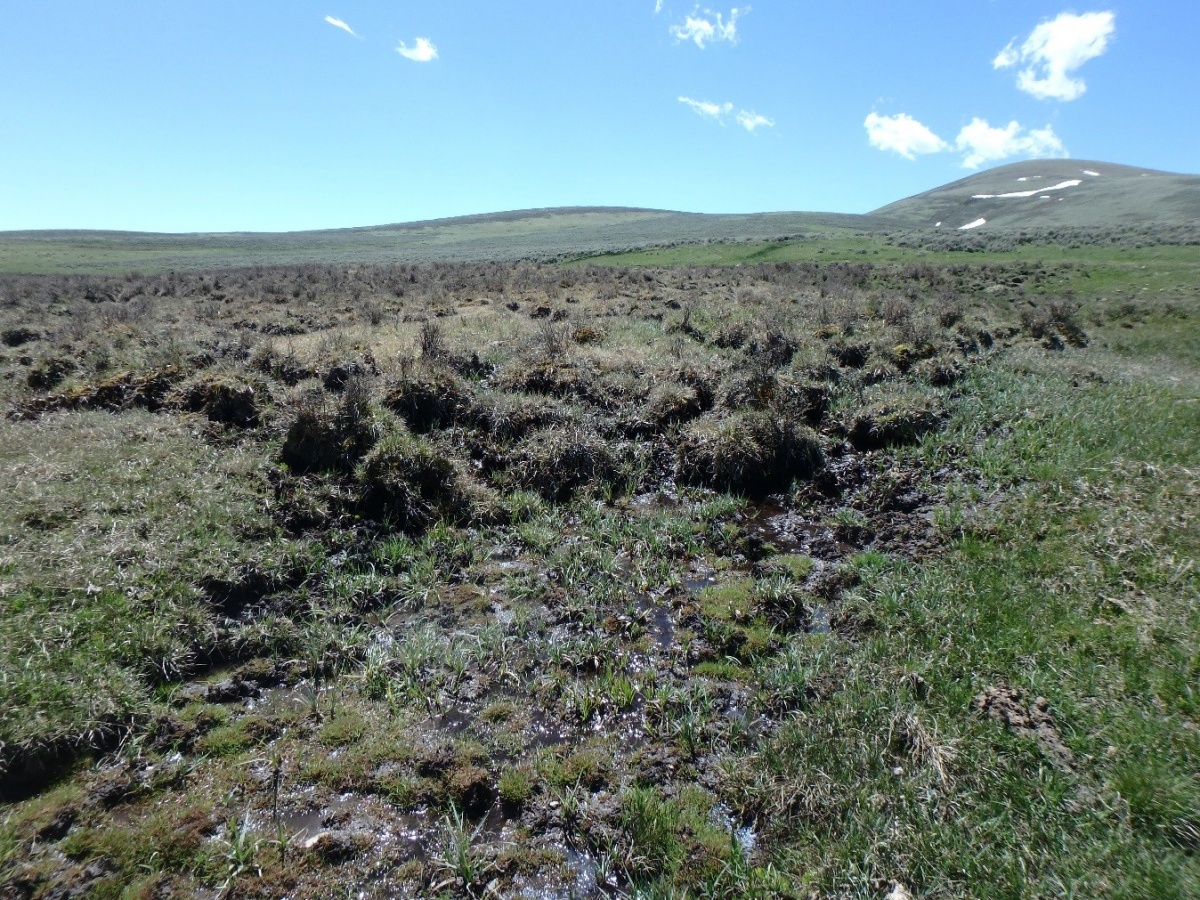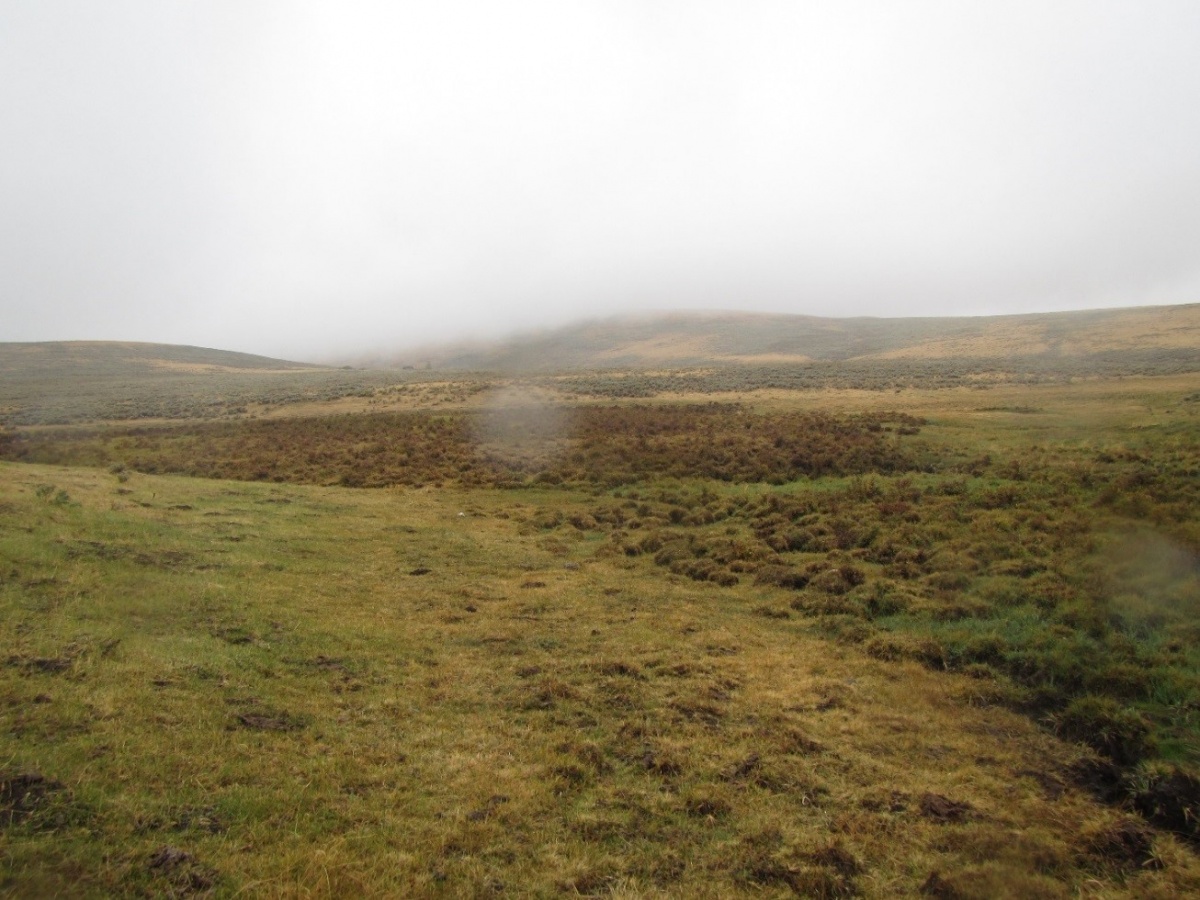You are viewing ARCHIVED content published online before January 20, 2025. Please note that this content is NOT UPDATED, and links may not work. Additionally, any previously issued diversity, equity, inclusion or gender-related guidance on this webpage should be considered rescinded. For current information, visit https://www.blm.gov/blog.
A Tale of Two Counties...and their Wetlands
Story by Ryan Martin, Rangeland Management Specialist, Dillon Field Office; and Sean Claffey, hydrologist, Dillon Field Office
Photos by Sean Claffey, Hydrologist, Dillon Field Office
It was the best of times, it was the worst of times.

By the late 1800s cattle prices were at record highs as Americans demanded more beef. As a result, eastern cattle continued to pour into Beaverhead and Madison counties in southwestern Montana facilitated by the public land “Open Range” policy and a sea of available Montana grass.
Even though the cattle business was in the Best of Times, Nature was beginning to see the Worst of Times as unmanaged and overstocked Montana public rangelands were all too common. The result of the open range policy was that no one really controlled the public lands but everyone grazed them. This open range policy led to critical wetland areas in southwest Montana showing signs of deterioration in the form of hummocks.
Historically, bison and other grazing animals would usually spend a short time in a wetland area and then move to fresh grass elsewhere, often not returning for many months or years. This rest from herbivory and trampling for wetland areas usually provided ample recovery for them. However, as early as the 1880s, hummocks were developing in wetland areas in southwestern Montana because too many livestock stayed in the wetland areas for too long with no chance for recovery.
Hummocks are simply raised pedestals of vegetated soil much higher than the surrounding ground which results from long-term, large-animal trampling and tracking in soft moist soil. Hummocks can often be several feet high and cover an entire wet meadow. These raised pedicels of soil are exposed to the air much more than non-hummocked soil and dry out at a much greater rate. The trails or “channels” between the hummocks can also drain the wetland area prematurely.
When intact, these wetland areas act like sponges to store snowmelt and precipitation for late summer release. In arid climates such as southwestern Montana where every drop of water is important on the range, increased evaporation and decreased water storage in wetland areas is a great concern. Hummocks, once formed, are part of the landscape from many years to come. Perhaps thousands of years would pass before wind, rain and ice could reduce the hummocks to what they had been prior to the open range policy on public lands.

In the early 20th century, many wise ranchers became increasingly concerned that the open range policy on public lands that had existed for many years wasn’t good for anyone and the rangeland was being destroyed. The businessmen, not vested livestock producers, who wanted the quick payoff of grazing large numbers of animals and weren’t concerned with the sustainability of the rangelands, were mostly gone by this time period due to competition for grass and the harsh winter of 1886/1887.
Montana ranchers who were vested in the ranching community witnessed how grazing management and rest were integral parts of having a sustainable livestock operation and how public lands in Montana needed management to flourish. Their concerns were echoed by many vested ranchers in the western United States who initiated the passing of the Taylor Grazing Act of 1934 that eliminated the open range policy on public lands and provided regulation of grazing to improve rangeland conditions and regulate their use.
Since 1934, savvy livestock producers and government rangeland managers have worked together to provide sound grazing management that ensures sustainability of public resources, especially wetland areas. However, even with current grazing management in wetland areas, the hummocks remain; a staunch reminder of days when it wasn’t the Best of Times for Nature.
Dillon Field Office Hydrologist Sean Claffey is working with current grazing permittees on an experimental basis to restore hummocked wetland areas to their historic structure and function on BLM-administered lands in Beaverhead and Madison counties. Several wetland areas have been chosen for this restoration effort. BLM plans to “walk” over hummocked wetlands in late winter or early spring to mash down the hummocks using the tracks on the Caterpillar. The idea sounds radical but to restore historical function and balance in some Montana wetlands the solution might be as simple as a “walk in the park”…using a Caterpillar.
The Dillon Field Office plans to share a follow-up article discussing our results from this worthwhile project to restore southwest Montana critical wetlands. Stay tuned.
Ryan Martin, Rangeland Management Specialist, and Sean Claffey, Hydrologist
Related Stories
- Monument map earns ‘finalist’ honors in global GIS awards
- BLM Fire and National Conservation Lands managers collaborate to meet shared goals
- Partnership drives ongoing habitat restoration in Muddy Creek watershed
- Recreation for all: Accessibility on Montana-Dakotas public lands
- North Central Montana District employees celebrate new adoption
